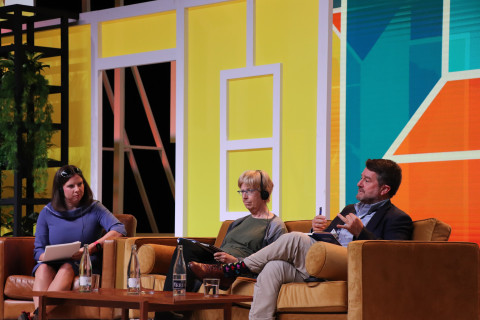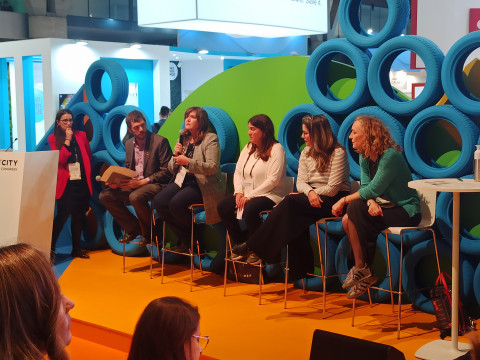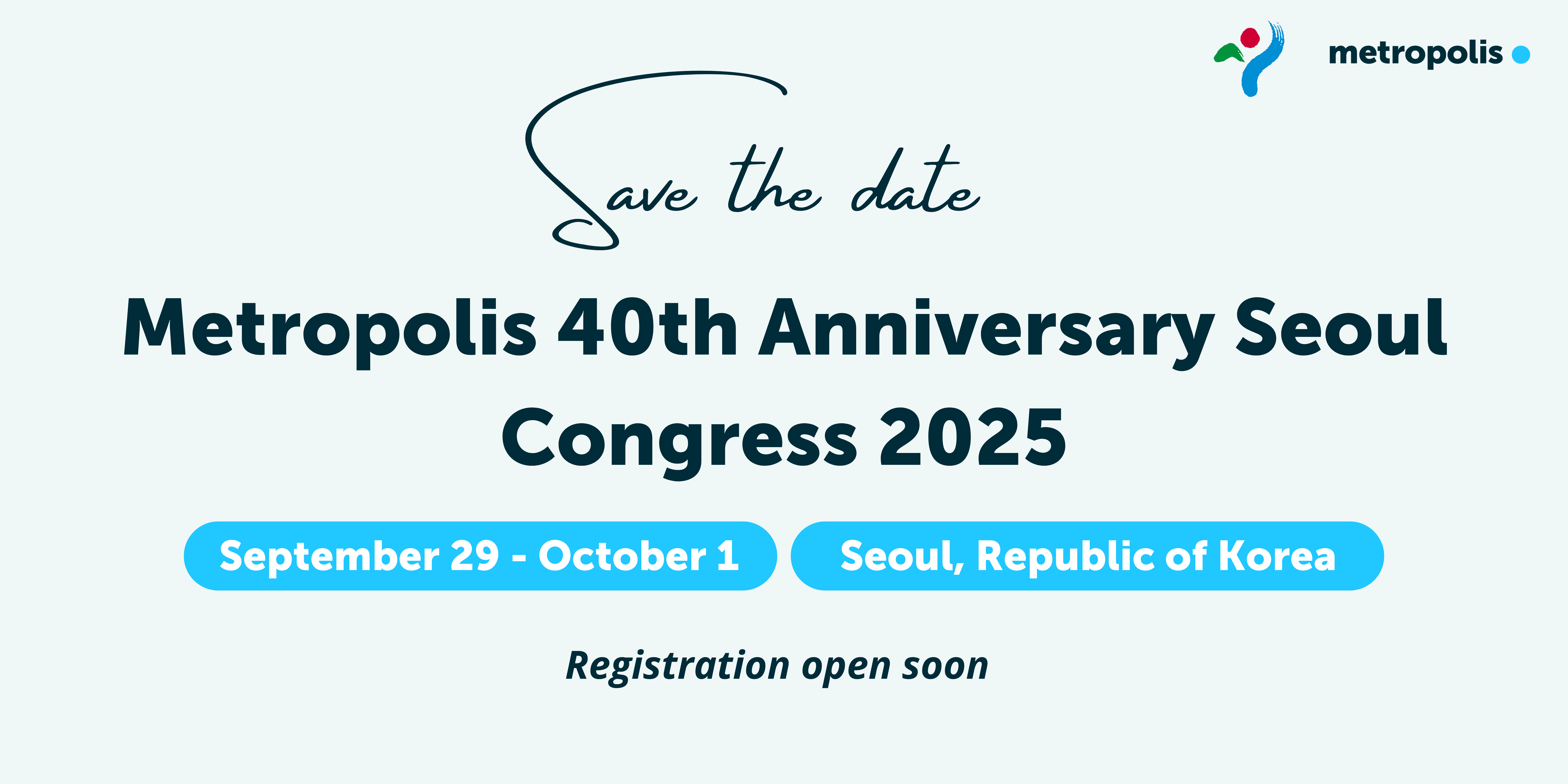
Photo: Kazuo ota
Smart cities will be smart if they bridge the digital divide
Smart cities earned their reputation as efficient, data-driven, connected environments where information is seamlessly shared to provide a better quality of government services.
Despite this promise, the implementation of information and communication technology (ICT) doesn’t always improve citizen welfare.In some cases, it has even demonstrably harmed already marginalised groups. As this constantly changing technology is adopted, metropolitan leaders must pass the microphone to underserved groups. Citizens are the experts on the lived experience of their cities. They are the ones using these public services daily as they work, study, and build their lives. The quality of these services is essentially the first indicator of the quality of life in any territory. Smart cities will harness this collective intelligence if they will live up to their lofty reputation.
Collaborative governance
Territorial fragmentation, increasing inequality, climate change, and lack of trust in public administrations are global challenges that offer a moment to rethink metropolitan government. As these challenges push us into an unknown future, cities can include people to be active actors in the design of these policies to create an ecosystem of transparency and accountability. This shift can increase the legitimacy of public policy-making through this technological advance, but how can local governments improve trust in democratic institutions while simultaneously integrating collaborative efforts in order to achieve a shared future?
Collaborative governance is a model that focuses on finding solutions through public value. By fostering spaces for exchange among the population, diverse stakeholders can work together to improve the management of resources and delivery of public services. Collaborative governance is not a silver bullet or fast fix to urban equality. It’s a context-specific combination of measures that provide spaces of citizen collaboration that enhance transparency, effectiveness, and accountability. Metropolises like Chengdu, Rosario, Seoul, Bogotá, and Barcelona are already putting this concept into action.
Santiago, Chile stands out as a role model at this year’s Smart City Expo World Congress. To address these issues, they’ve created advisory committees for different topics in the city. The members range from academia, non-profits, the private sector, etc. This is paired with thematic working tables, municipal networks, and weekly town hall meetings open to the public.
Governor Metropolitan Regional Government of Santiago, Claudio Orrego speaks on the city’s implementation, “we have an open government approach, and when we do our town hall meetings, we show the outcomes of the meetings and then the co-designing of social programmes. Instead of having highly qualified technicians, we include people to be active actors of the design of these policies.” This assortment of strategies lets Santiago cover all segments of the population. The processes enable active listening so that when the time comes, those viewpoints and concerns are incorporated into the new policies.

Claudio Orrego during a plenary session of Smart City Expo 2022
Gender equity in the digital economy
People flock to cities for opportunities. There is a reason why countries with higher GDPs have higher rates of urbanisation. The links that come with bringing mass numbers of people and businesses together generate innovation and boost the economy. The digital economy has a similar effect, but like in the traditional economy, men and women aren’t reaping the same benefits.
Hyperconnectivity is the new standard and the backbone of the digital economy. The digital economy is the result of all the economic activity produced by the billions of connections online each day by people, businesses, devices, data, and processes. Unfortunately, the same gender inequality that exists in the physical world is replicated. This impact cannot be understated. Over 90% of jobs worldwide have a digital component. Digitalisation impacts how businesses interact, and how people obtain services, information, and goods.
It’s time we apply the gender lens to the digital economy starting by examining the gender digital gap. The International Telecommunications Union reports that over 50% of the world’s women aren’t yet online. In developing countries, this difference is even more pronounced with the internet penetration rate for women at only 41% in contrast to men’s 53%. Globally, women are 8% less likely to own a phone than men. These disparities stifle women’s access to the opportunities offered by the digital economy.
There are many pathways to address this issue. They take form in Los Angeles as the Vision Lab. This new initiative aims to address the inequities of the digital divide. Their 12-week business idea accelerator is open to budding entrepreneurs, changemakers, and community builders. Individuals at any stage of their entrepreneurial journey are invited to join. Participants come with an idea to benefit the local area and the Vision Lab provides everything they need to bring it to life. Tech mentors guide them through their free online business tools and access funding opportunities. The support goes beyond this guidance. The Vision Lab increases access to affordable tech tools, provides training for tech careers, and provides reliable, high-speed Internet. While the programme is still fairly new, it’s already enabling more women to participate in the digital economy.

During the session "Gender Equity in the digital economy" organized by Metropolis and CHANGE at Smart City Expo 2022
Barcelona’s strategy to bridge the digital gap is known as BCN Fem Tech. Currently, women only occupy 26% of the ICT workforce in Barcelona. This percentage gets even lower when we examine intersectionalities of race and age. BCN Fem Tech aims to change that. The strategy is based on three axes: digital transformation, digital empowerment, and digital innovation. Through these axes, the Barcelona City Council is contributing to the development of a more equitable digital economy through its more than 30 programmes to make women visible in the digital sector to increase women’s transparency and participation in this crucial sector shaping the future.
In Buenos Aires, during the last 10 years has been working very hard in incorporating the gender perspective in mobility. Today through the use of data everybody can find a better way to commute within the city and this is very important related to gender as women form 60% of the total public transport users. According to Manuela Lopez Menendez, Secretary of transport and public works in the City of Buenos Aires, women need particular improvements in public space and transport because they use it to take care of others, which means a wide range of transport modalities and reaching very early and late hours of the day. As in many other cities, women tend to do 5 or 6 trips per day, mainly because of their domestic workload, whereas men normally do 2 trips per day.
Other efforts to reduce the digital divide also focus on public officials. This is the example of Greater Paris' "Digitals Explorers", which, over the course of a year, trains all public officials who are interested in digital issues and innovation in their community, whether they are project leaders or not. Reaching 39 local authorities, this programme offers to experiment with new tools in hands-on workshops and receive technical support for the construction of projects.
As all this technology has become ubiquitous in our daily lives, it’s easy to lose sight of the fact that smart cities and the digital economy are still relatively new territory for local governments. On one hand, cities are experimenting with ways to employ its incredible potential for bringing people together toward collective governance. On the other hand, they’re working out ways to eradicate the inequalities that are so entrenched in societies. Innovative cities and metropolitan spaces must center the experiences of their most disconnected, underserved residents in their plans and actions to the benefit of all residents.

